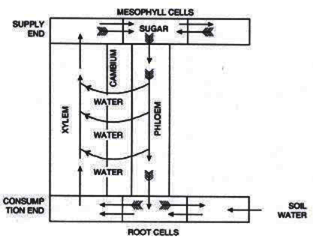 Long Answer Type
Long Answer Type(a) Give any three characters that have developed during human evolution.
(b) Explain the term chemogeny.
(c) Give any two distinctive features of Dryopithecus.
(a) Explain the evolution of giraffe’s neck according to Lamarck’s theory of evolution.
(b) Give two chromosomal similarities between man and apes.
(c) Name any two temporary embryonic structures in vertebrates which provide evidence for evolution.
(a) Persons suffering from sickle cell anaemia are at an advantage in Malaria infested areas. Explain.
(b) Define the term gene flow.
(c) What are analogous organs? Describe with one example from the plant kingdom.
(a) With the help of diagrams, name and describe the different types of placentation seen in angiosperms.
(b) Give four points of anatomical differences between a monocot stem and a dicot stem.
(c) Define the following terms:
(i) Racemose inflorescence
(ii) Osmotic pressure
(a) Draw a diagram of the internal structure of the human ovary.
(b) Define the term water potential.What are its components? Explain.
(c) Give definition and importance of:
(i) Imbibition
(ii) Parturition
(a) Give four adaptations in flowers pollinated by insects.
(b) Describe the mass flow hypothesis for translocation of organic solutes (food) in plants.
(c) Write a brief note on the causes of infertility.
(a) The four adaptations in flowers pollinated by insects.
i. Large and brightly coloured flowers.
ii. Spiny pollen grains and light coloured.
iii. Fragrant and nectar-secreting flowers.
iv. Sticky stigma.
(b) According to this hypothesis put forward by Munch, the translocation of organic solutes takes place en-mass through phloem along a gradient of turgor pressure from the region of higher concentration of solutes.
According to Munch’s hypothesis, as a result of photosynthesis, the mesophyll cells in the leaves contain a higher concentration of organic food material in them and correspond to supply end. The cells of stem and roots where the food material is utilised or converted into insoluble form correspond to consumption end.
Mesophyll cells draw water from the xylem of the leaf due to higher osmotic pressure and suction pressure of their sap so that their turgor pressure is increased. The turgor pressure in the cells of stem and the roots is comparatively low and hence, the soluble organic solutes begin to flow en mass from mesophyll through phloem down to the cells of stem and the roots under the gradient of turgor pressure. In the cells of stem and the roots the organic solutes are either consumed or converted into insoluble form and the excess water is released into xylem through cambium.
(c) Causes of infertility can be as follows:
i. Deficiency of sex hormones or hormonal imbalance.
ii. Low sperm count or poor sperm motility in males.
iii. Blockage of sperm duct or fallopian tubes.
iv. Conditions like polycystic ovary, anorexia, overweight, crytochroidism.
v. Genetic and age-related factors.
vi. Improper fertilisation
(a) Give any four reasons for Mendel’s success.
(b) Briefly describe the technique employed in DNA fingerprinting.
(c) Give any two features of Genetic Code.
(a) Explain the mechanism of action of T cells to antigens.
(b)Explain how insulin can be produced using recombinant DNA technology.
(c) What is pisiculture? Give one advantage.
(a)Name the causative organism andpreventive measures for each of the following:
(i) Swine flu
(ii) Typhoid
(iii) Filariasis
(iv) Syphilis
(b)State four causes and four consequences of population growth.
(c)Differentiate between:
(i)Cannabinoids and Barbiturates
(ii)Biotic potential and Carrying capacity
